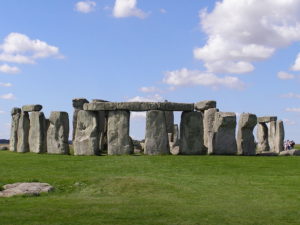
English Heritage said that a missing piece, which is one of the huge sandstone blocks called sarsen at the prehistoric monument Stonehenge in Wiltshire, England was removed six decades ago, has been taken back to the ancient monument.
During archaeological excavations that took place in 1958, the stone core was taken away. Its existence remained a mystery, but it has now joined the collection of English Heritage of over 500,00 artefacts. Experts said that its return might help in covering the source of these stones that are known to form a large part of the monument.
In 1958, the core was removed when a fallen trilithon was being raised. A trilithon is a megalithic structure that consists of 2 upright stones plus a 3rd across the top as a lintel. It was drilled as one of the measures to utilise metal rods in reinforcing one of the upright stones that had a crack. The repairs were covered by small plugs from the fragments of the sarsen found during excavation.
Van Moppes, a diamond cutting business that was based in Basingstoke, Hampshire, undertook the work of drilling three 32-millimetre holes horizontally through the 1m-thick stone. Robert Phillis, one of the employees in the company, kept a piece of the Stonehenge cores and placed it in his office. When he left the firm, Phillis took it with him and later relocated to the United States.
On the day before his ninetieth birthday, Phillis expressed his wish that the piece of the world’s famous ancient monument should be taken back to the English Heritage Trust. His sons, Lewis and Robin, travelled to Stonehenge in 2018 and presented the fragment to the conservation charity in Wiltshire, which looks after the circle of the ancient stone.
Where Are the Other Two Stonehenge Cores?
English Heritage doesn’t know if the other 2 Stonehenge cores survived, and the charity is urging those involved in the excavation that took place during the fifties, or whose family has some information related to the cores to kindly get in touch.
The curator for Stonehenge at English Heritage, Heather Sebire, stated that they were surprised when they got a call from the United States and the caller telling them that they had a fragment of the Stonehenge. They are grateful for Robert’s family for returning the important piece of Stonehenge. He added that studying the DNA of the Stonehenge cores could be the key to finding out where the gigantic sarsen stones originated.
Phillip’s Wish Is Fulfilled
Lewis made a statement saying that their father was always interested in archaeology throughout his life and acknowledged the huge significance of the monument piece in his care. It was his wish that the piece is taken back to Stonehenge. He added that they are glad that the core has returned home, especially as it’s now used to further important study.
Project for Pinpointing the Sarsen’s Origin Is Under Way
Stonehenge’s smaller bluestones were brought from Preseli Mountains in south-west Wales. However, experts say that the origin of the larger sarsen stone is not known. A project is currently investigating the sarsens’ chemical composition to pinpoint the origin.
The core that was just recovered, which is pristine than the weathered stone where it was removed, presents a great chance of analysing the inside of the unweathered stone. David Nash, a professor from the University of Brighton who is leading this project, stated that the generally accepted theory was that the sarsens originated from Marlborough Downs, but before results showed that they originated from several locations.
He added that their sarsens geochemical fingerprinting in situ at Stonehenge, plus the core itself, comparing it with the samples they got from the areas across South of England will tell them the origin of the different stone.
Shirley Mist has been involved in fashion and design for many years. She has also written extensively for many online publications. She currently writes for The Tribune World and is a valued member of our team.